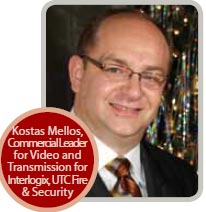Designing a retail solution depends on the nature of the business. We look at how security is implemented differently in apparel stores, electronics chains, fast-food restaurants and convenience stores. Finally, the future of retail lies in networked solutions, particularly the cloud.
Designing a retail solution depends on the nature of the business. We look at how security is implemented differently in apparel stores, electronics chains, fast-food restaurants and convenience stores. Finally, the future of retail lies in networked solutions, particularly the cloud.
Shopping behavior has changed. Stores are becoming showrooms for consumers to flip through the hottest novels, then hunt online for the best deals. The fall of US book megastore Borders demonstrates retail must cater to Web-savvy buyers. The business of retail is open access for shoppers. Security cannot interfere with sales. “The difference has to be driving business efficiencies,” said Patrick Lim, Director of Sales and Marketing, Ademco Far East. “A common method of ROI measurement would be to use value of goods stolen before and after a system is in place. However, that is quite subjective between a supermarket and a jewelry store, where the size of the crowd and average value of goods is vastly different.”
A solution must serve user needs. If a retailer only focuses on cheap solutions, it will not see robust performance, said Jun Zhou, Industry Account Manager for Hikvision Digital Technology.
Integrated security working in concert with business systems yields greater benefits. “The high-end solution comprises an integral concept in which all security systems complement each other or constitute components of one solution that are also required for other solutions,” said Klaus Lienland, Business Development for Bosch Security Systems. “This significantly reduces installation costs, line network expenditure and frictional losses between elements.”
Retailers come in many forms and with unique needs. High-end apparel and high-value electronics require asset tracking. On the other end of the spectrum, eateries such as quickserve restaurants (QSRs) emphasize efficiency.
Integration Roadblocks
Retailers may balk at security if they have a large investment in existing equipment. “If everyone built new stores and didn't have legacy products, it would be different,” said Jim Shepherd, National Account Manager at Protection One. “But most retailers have legacy products, which you have to breathe life into and maintain. Retail has become a hybrid investment, where they continue to support the legacy equipment and migrate portions to IP when it makes sense.” 
Equipment vendors must provide a migration path for legacy solutions. “What that means for a retailer is there is no need to forklift products and throw stuff out,” said Kostas Mellos, Commercial Leader for Video and Transmission for Interlogix, UTC Fire & Security. “A DVR sooner or later is going to outlive its usefulness. It's better to have a plan of migration, rather than having a failure one day and trying to deal with that.” 
Each retailer has unique concerns and equipment, making integration challenging. “Probably the most interesting aspect is to interface with existing systems,” said Tom Coyle, VP of Information Solutions for Avery Dennison. “The nice thing is standards have come a long way. Now there are brokering systems that enhance the connectivity between systems. It's not simple to construct these interfaces, but it's much simpler than it was 10 years ago.” 
Bringing together old and new systems includes supporting pointof- sale (PoS) management, access control, alarm monitoring and HVAC. “It doesn't matter how many bells and whistles a technology has if those features do not add value to the customer,” said Matt Steinfort, President and CEO of Envysion.
However, integration is easier said than done. “Integration is hard because everyone does the fingerpointing game and says it's someone else's problem,” Shepherd said.
Understanding Technology
New solutions promise to ease old pains, but vendors usually oversell products. While each technology does specific things well, an isolated system will be limited.
RFID has increased uptake, as it improves business processes, said Frost & Sullivan in its “RFID in the Apparel Industry” report. Performance factors will determine the success of a deployment, such as write rates and read rates. “With write rates gaining prominence, the need to store more data in RFID chips is expected to emerge,” the report found.
Unfortunately, RFID in electronic article surveillance (EAS) can be easily defeated on its own, Lim said. This requires a secondary verification, which is usually done through video. Coyle added, “An EAS tag effectively provides a narrow functionality, sounding an alarm at the doorway. However, these EAS technologies do not provide an exact identifier for each product and store managers don't know the identity of the specific items that were stolen.”
Limited Intelligence
Intelligent video analysis has gotten a bad name, particularly for people counting. “Many people have the wrong impression that they can use the same camera for video recording and analysis,” said Wallace Ma, CMO for TeleEye. “Sometimes customers don't fully understand the technical constraints.”
Camera angles and calibration affect results, as well as retailer satisfaction. For accurate counts, other sensors can provide verification for analytics, Ma said.